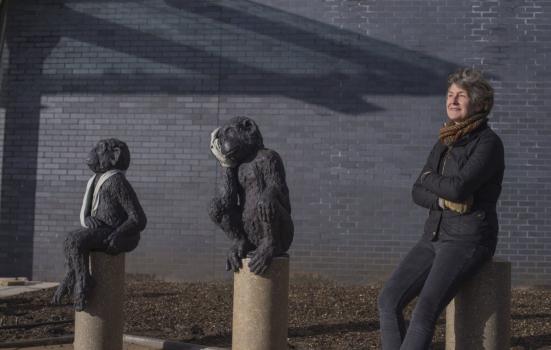A shared set of values to assess quality and outcomes needs to replace providing evidence of clinical effectiveness for arts interventions, believes Jane Willis.

Jim Wileman
As funding across both the health and arts sectors is squeezed, arts and health practitioners are being called upon to articulate and demonstrate why money should be spent on arts and health interventions. This, in itself, is not unreasonable. Evaluation of creative projects should be robust and credible, but what is interesting is the debate it seems to have sparked around intrinsic and instrumental value, as if one has to choose between the two. I would argue that it is not a question of either/or.
I think that part of the problem stems from a common assumption that arts projects which deliver instrumental benefits often suffer a compromise of artistic quality. In other words, an artist cannot deliver great work if they are harnessed to a requirement to deliver health or some other instrumental outcomes.
It seems that the arts and health sector is caught between two masters. While we strive to deliver artistic excellence, we also have to demonstrate clinical effectiveness. I believe that the path to excellence lies not in choosing which master to serve – the either/or dilemma – but in creating a shared set of values and a framework for assessing quality.
Perhaps it is in recognising and reconciling tensions that arts and health practice is at its most powerful and transformative
What might this shared set of values or quality framework look like? For the NHS, excellence is primarily about clinical effectiveness, patient safety and patient experience, as referenced in the Health and Social Care Act 2012. The values shared by the arts and health sectors should therefore refer to the importance of evaluation. Arts practitioners should be able to articulate and provide evidence of their impact. A quality framework should clearly reference the safe and ethical practice that is vital to the NHS. Poorly delivered arts projects have the potential to do more harm than good. There should be a clear accord between arts and health practitioners and the NHS around the importance of the patient experience.
An artist working in a health context might be expected to have a range of professional and interpersonal skills and competencies beyond their artform skills, as well as holding the personal attributes such as warmth and openness that enable them to deliver this work effectively. It is therefore fairly easy to see how the arts and health sector can fall into line with the NHS’s three dimensions of quality. But where does this leave the values that artists hold dear?
For artists and arts organisations, there is no single, identifiable, clear-cut quality framework. An assessment of quality might encompass a variety of criteria according to the artform, the artist or the context. It might take into account production values, the level of craft or artistic skill, artistic integrity, willingness to be curious, to take risks, to innovate, having something to say and a new way to say it.
This is where the idea of a shared set of values becomes more challenging. There are clearly tensions between the NHS requirement for safety and the elimination of risk and the practitioner’s need to take artistic risks and to innovate. Does artistic quality matter to a health commissioner? Surely, if the work delivers health benefits that is the only important criterion.
In his provocation paper Being – In Tune Peter Renshaw makes the point that “the link between the social and the artistic” is of vital importance to socially engaged arts practice. “Artists working in participatory settings have a distinctive role and unique contribution to make in society; they are not teachers, social workers, carers or therapists, for example. Of course, they have to have some of the qualities and attitudes of these other professionals in order to connect to different contexts, but the roles and responsibilities of the arts practitioner are necessarily different. All... will be concerned with integrity and the quality of practice and performance.... The challenge is to ensure that there is a synergy between the social and the artistic – a synergy that brings with it a sense of dynamism and a confidence in risk taking.”
There are some clear tensions between the commonly held values within health and the arts. However, perhaps it is within this tension that arts and health practice finds its place, its dynamism. Perhaps it is in recognising and reconciling tensions that arts and health practice is at its most powerful and transformative. It is also important that any framework be driven by values, since firmly held values have the power to drive social change and to endure. What we hold collectively to be important remains when impetus or policy shifts.
Over the past 20 years, NHS policy, priorities and agendas – even its structures – have changed. Whole organisations, as well as the individuals within them, have come and gone. Despite this, the values that drive arts and health practice have endured.
Tom Crompton, change strategist at WWF-UK and author of Common Cause: The Case for Working with our Cultural Values, points out that in making manifest our values, we can drive change. Values are generally grouped into two sets: intrinsic and extrinsic. We hold them in dynamic tension. Intrinsic values such as social justice, broadmindedness and community might strain against extrinsic values such as success, financial security and power. When we see or are surrounded by strong references to one value set, such as an advertising image of a fast car, that dynamic tension shifts slightly in favour of that value set.
The values of artists, such as creativity, curiosity and expression, are part of the intrinsic bundle associated with stronger concern for social and environmental outcomes. Therefore the art we produce does not merely reflect our culture but shapes that culture. So, while health commissioners might require the instrumental benefits to be quantified and expressed in terms of numbers and figures, it appears that the intrinsic value of art might be enough to change the world.
Jane Willis is Director of Willis Newson.
www.willisnewson.co.uk
Willis Newson will be running a five-day training programme called Evidencing the impact on how to evaluate arts, health and wellbeing projects. It will run between May and July in Newbury.




